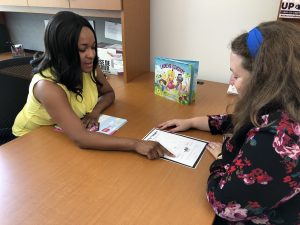Competency 6: Engage With Individuals, Families, Groups, Organizations, and Communities
Introduction: A practitioner is to interact with individuals, families, groups, organizations, and communities in a manner that exhibits professionalism and adheres to the NASW code of ethics. Social Work Practitioners build a working relationship with the client to encourage him or her to participate in the therapeutic process. The NASW defines evidence-based practice (EBP) as, “A process in which the practitioner combines well-researched interventions with clinical experience, ethics, client preferences, and culture to guide and inform the delivery of treatments and services” (2019). In doing this a client’s needs are met in a way that is beneficial to them because treatment supports have been identified as the most effective method to assist with issues. Some examples of engagement skills utilized are empathy, listening, and patience to focus on common goals.
6.1 – Examine evidence-based practices to prepare for professional engagement across systems
Course Evidence: In Advanced Clinical Practice we learned advanced interviewing skills, identifying different personality types, and the use of evidence-based practice methods to work with various client systems. This was practiced to incorporate in one-on-one and group sessions in class. The method learned was Cognitive Behavioral Therapy (CBT).
Field Evidence: Observed my supervisor’s engagement skills and style when conducting therapeutic sessions and with other professionals. Evidence-Based practices used in therapeutic sessions were CBT, Bright-Ideas Problem-Solving, and the strength-based perspective for motivation.
6.2 – Engage with systems utilizing evidence-based strategies
Course Evidence: At the beginning of the school year a benchmark video was made where I was to facilitate an initial group therapy session for women dealing with cancer. This was done to showcase interviewing and engagement skills. Concluding the year a final group therapy video was made to demonstrate all skills learned and utilization of therapy model Cognitive Behavioral Therapy. In watching both videos a comparison reflection paper was completed to compare my overall performance, identify how I improved, and areas of growth. Final video demonstrated understanding and ability to facilitate a therapeutic group session, engage various clientele personality types, and use EBP intervention.
Field Evidence: Engaging with Elementary aged students, school personnel (guidance counselor, principal and teachers), Erlanger Hospital Oncology staff team (doctor, nurse, PT, OT, and Child Life Specialist), and parents in a professional manner. When conducting school-based prevention lessons Lauren’s Kids is the curriculum used, which is an evidence-based curriculum to teach kids about body boundaries, trusting adults, and tools to protect themselves. This curriculum is child-friendly and created to be age appropriate for all grade levels K-12 as well as provide hands on training through video, discussion, and activities. There are various programs and because of these factors CAC chose to use this curriculum.

Explaining the Lauren’s Kids body safety activity

